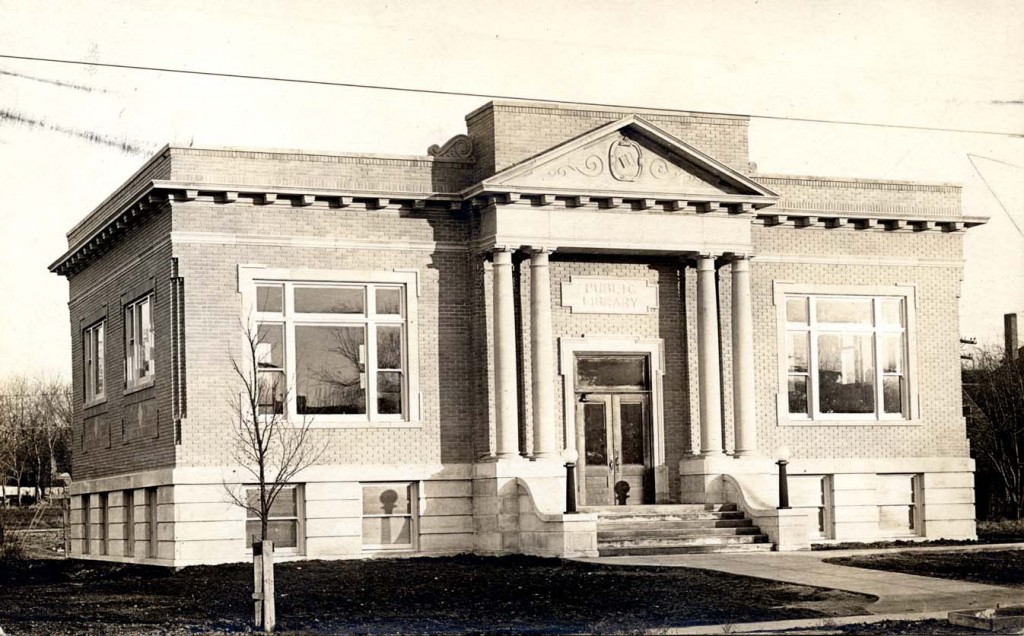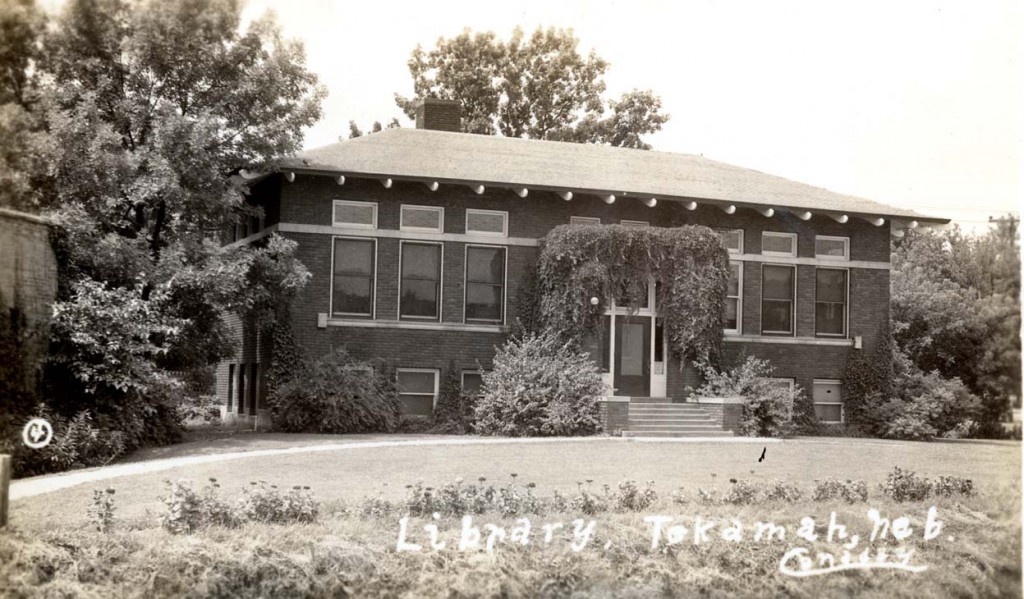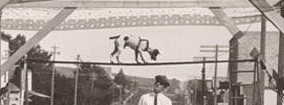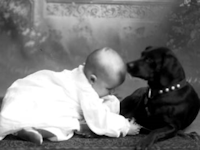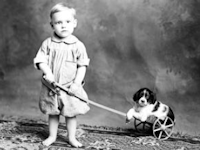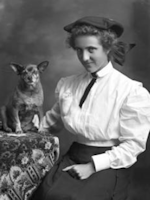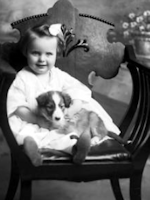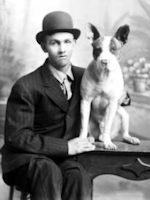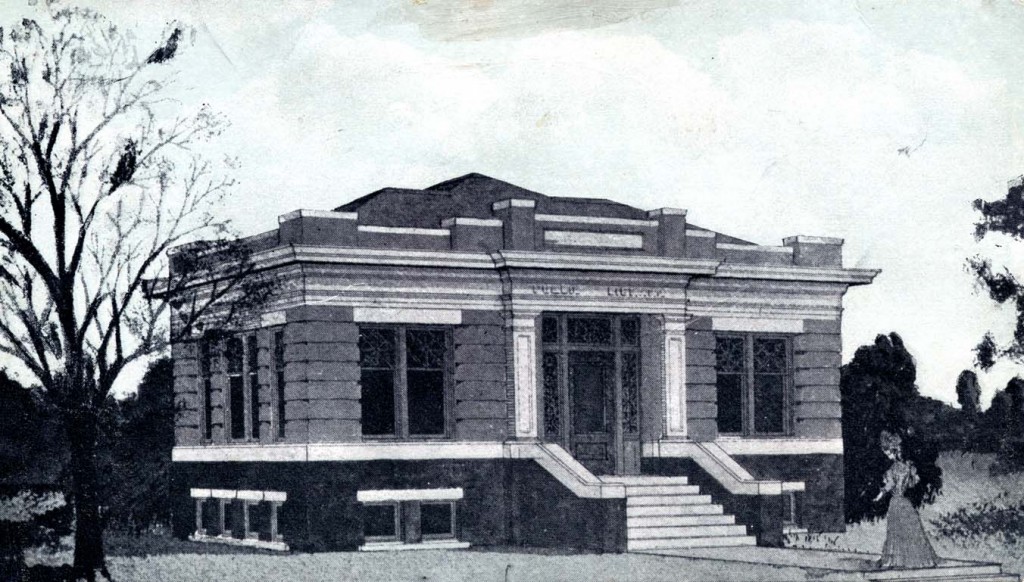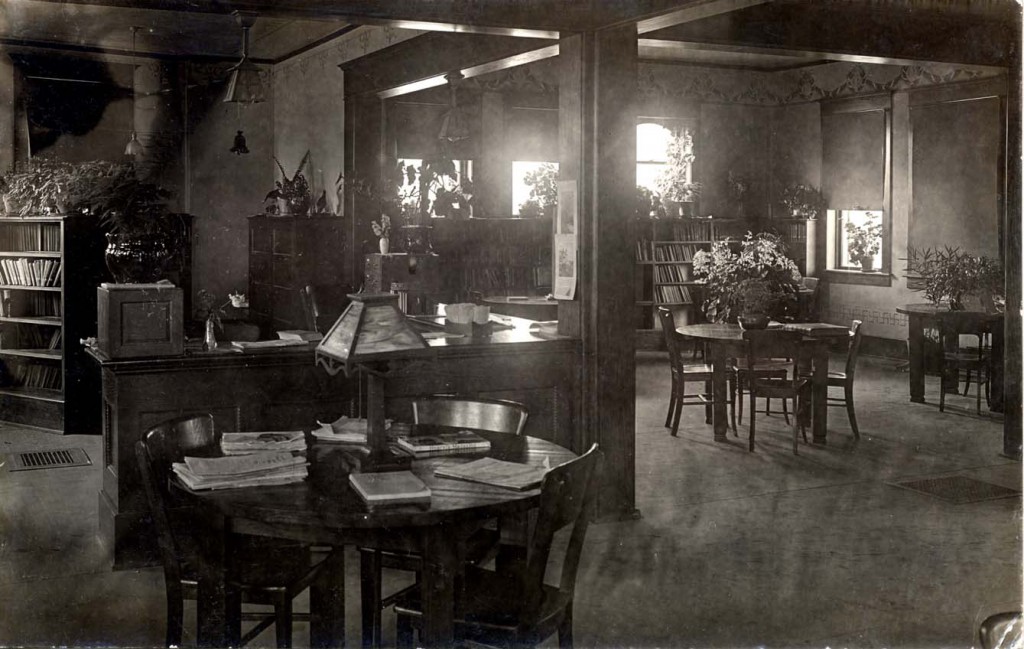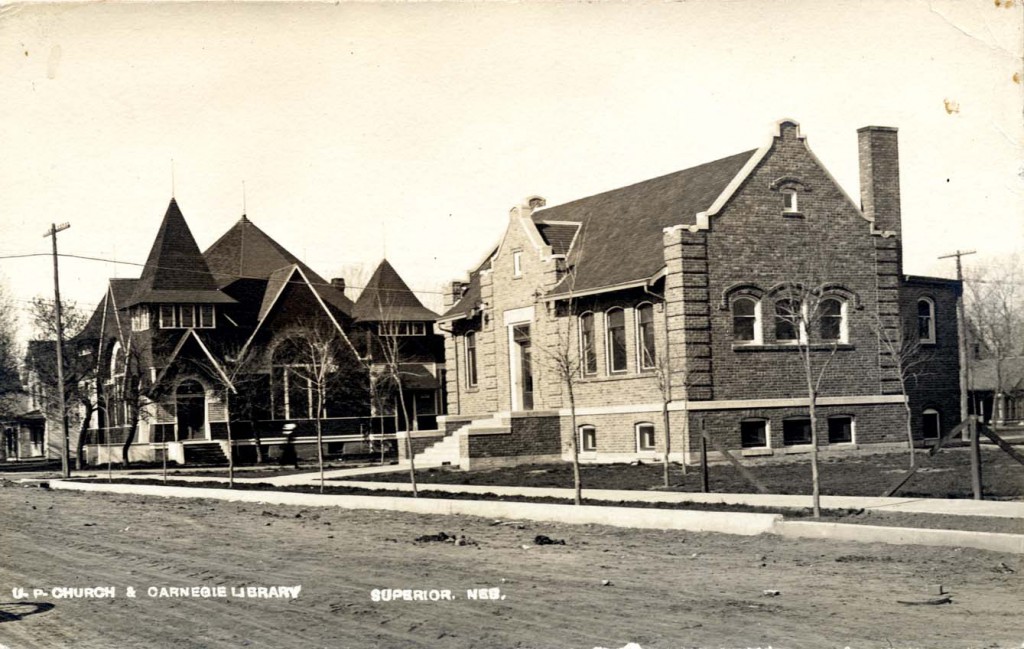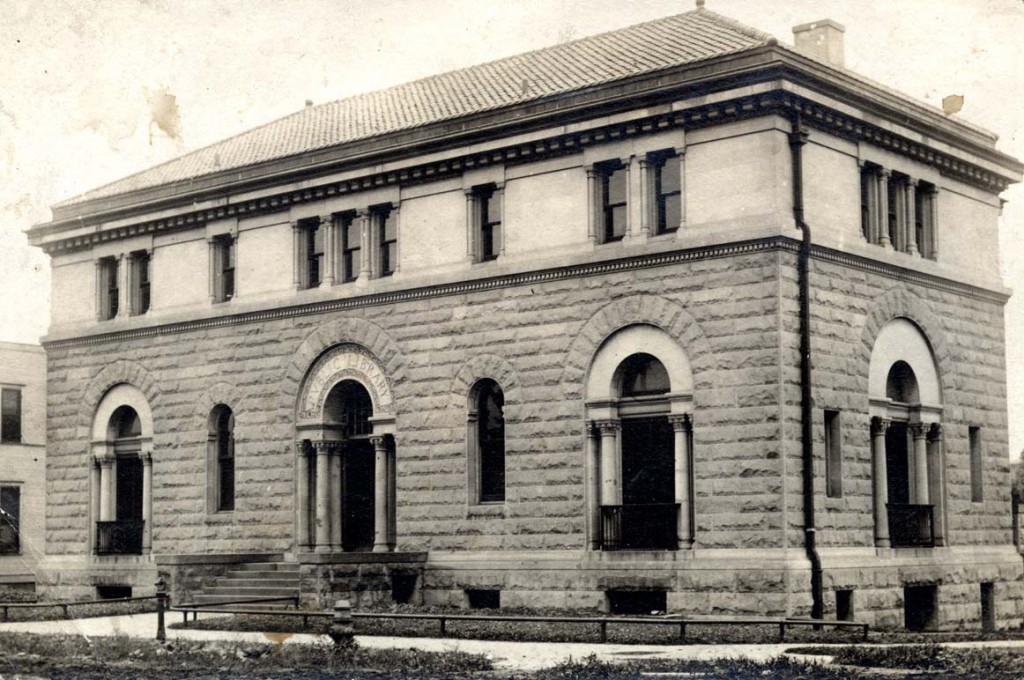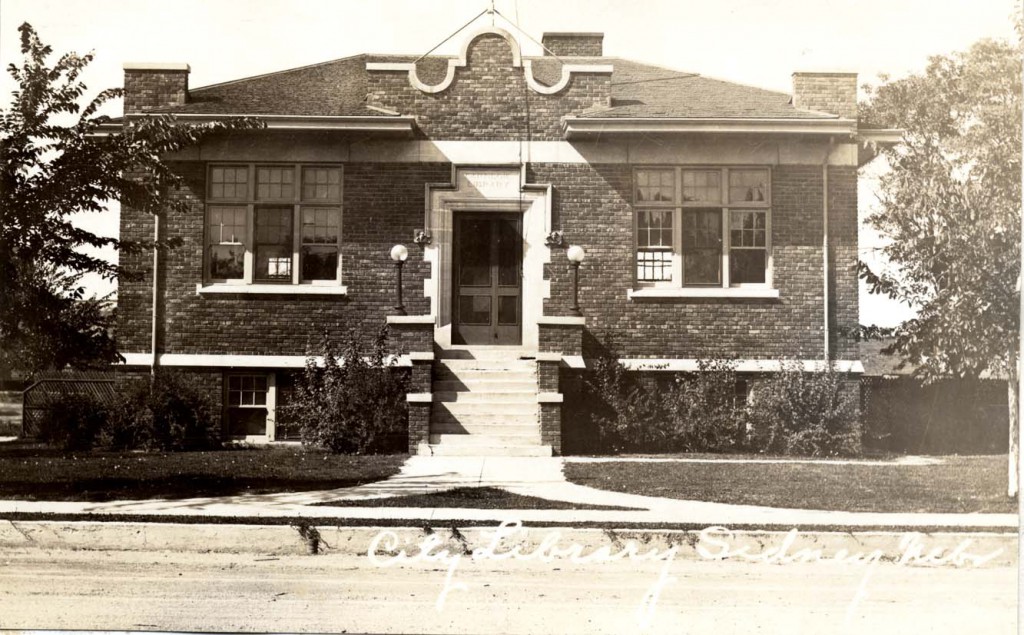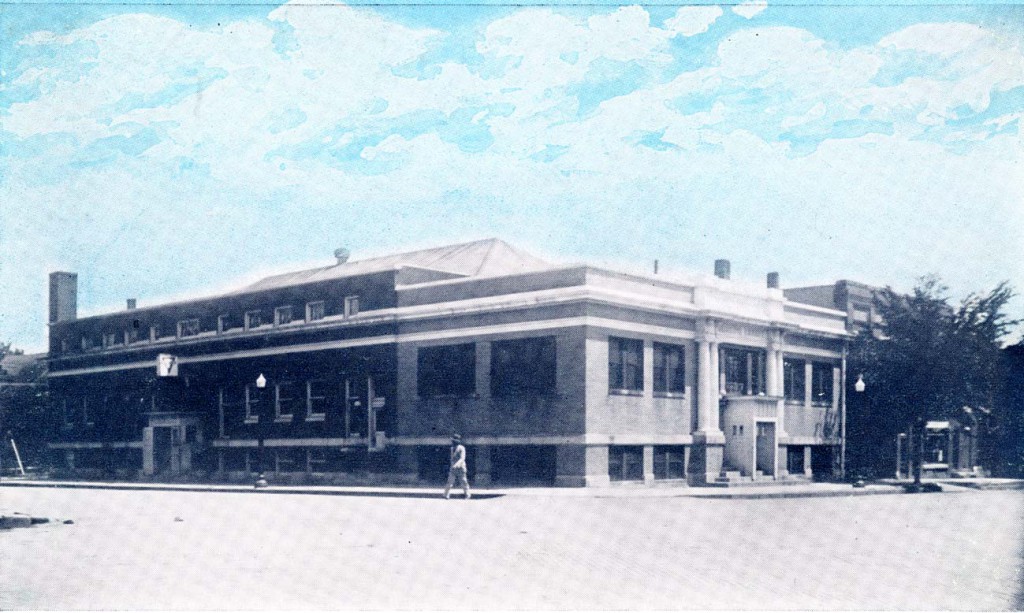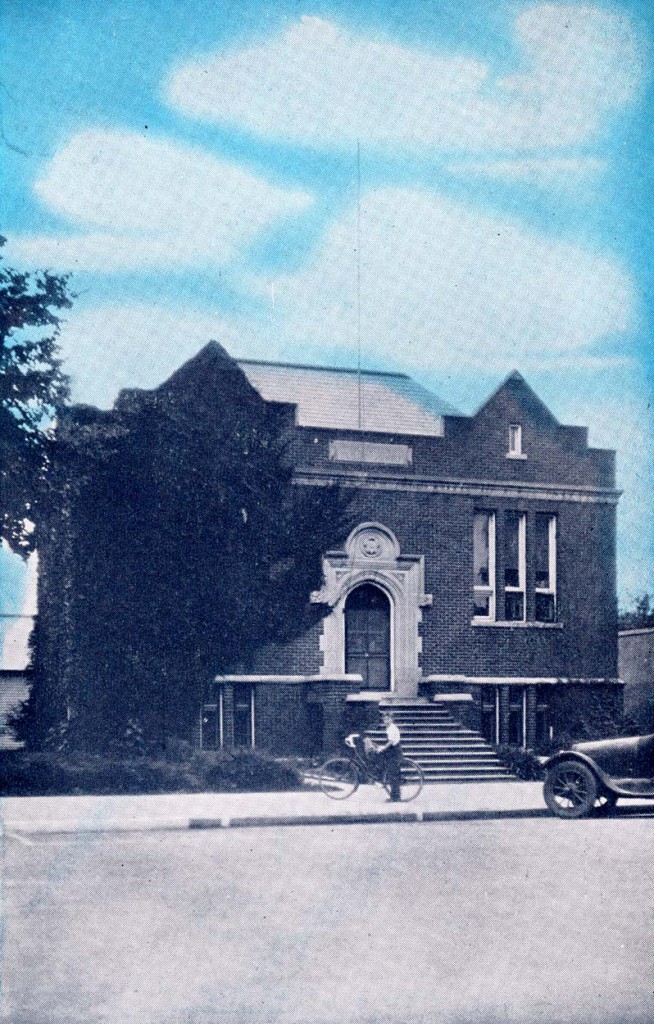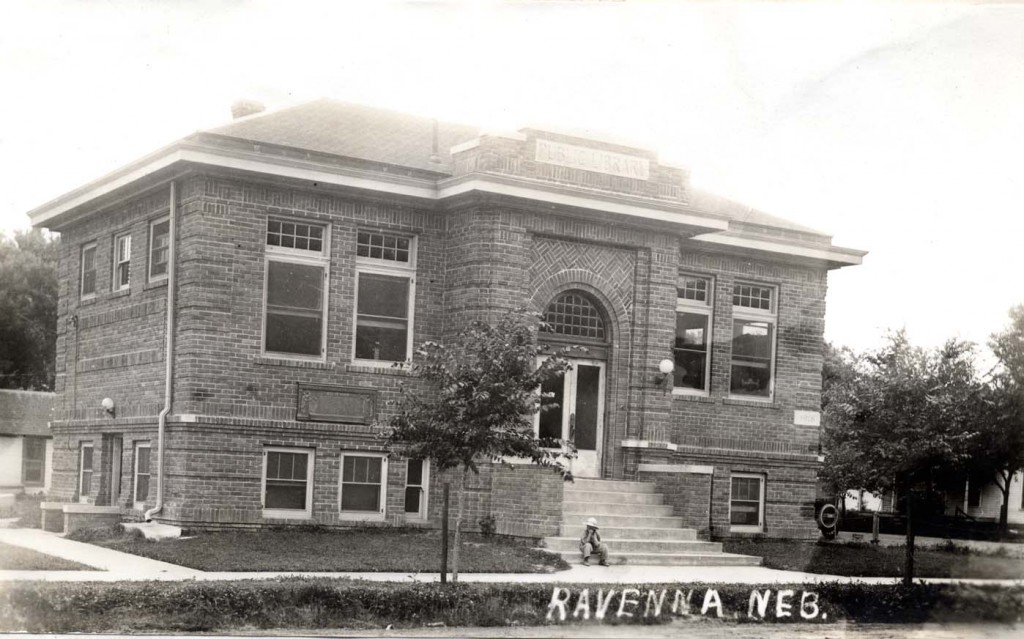Search the Blog
Categories
- Books & Reading
- Broadband Buzz
- Census
- Education & Training
- Friday Reads
- General
- Grants
- Information Resources
- Library Management
- Nebraska Center for the Book
- Nebraska Libraries on the Web
- Nebraska Memories
- Now hiring @ your library
- Preservation
- Pretty Sweet Tech
- Programming
- Public Library Boards of Trustees
- Public Relations
- Talking Book & Braille Service (TBBS)
- Technology
- Uncategorized
- What's Up Doc / Govdocs
- Youth Services
Archives
Subscribe
Category Archives: Nebraska Memories
Throwback Thursday: University Place Carnegie Library
Posted in General, Nebraska Memories
Leave a comment
Dogs Rule and Cats Drool
A few weeks ago, I wrote a post titled “Cats Rule and Dogs Drool” that highlighted the cat photos in Nebraska Memories. I don’t want to offend dog lovers, so today’s post has gone to the dogs.
While I don’t know if any of the cats were drooling in the photos, I do know when comparing the number of cat pictures to dog pictures in Nebraska Memories that dogs definitely rule. There are only 11 photos of cats in the collection compared to 70+ photos that contain at least one dog. To be fair in a number of the photos the dog is not the center of attention and is just part of the crowd. This is true in this 1927? photo of a group of men and a dog standing in front of the Seefus Tavern and confectionary store in Valley, NE. In the description of the photo, you will find the names of all of the men, but the dog will forever be nameless.
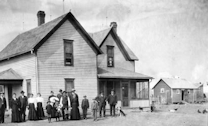 You can also find dogs included in
You can also find dogs included in 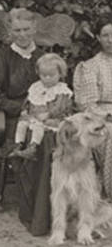 many of the family photos that were taken in front of the house. The Fred Schumacher family had at least two dogs that were included in their picture. Looking at the picture, I wonder if that white spot over by the chickens is a cat. The family in this photo, entitled People and dogs in front of sod house, included two large dogs in their photo. I wonder if the chicken was included on purpose or if it just wandered into the shot.
many of the family photos that were taken in front of the house. The Fred Schumacher family had at least two dogs that were included in their picture. Looking at the picture, I wonder if that white spot over by the chickens is a cat. The family in this photo, entitled People and dogs in front of sod house, included two large dogs in their photo. I wonder if the chicken was included on purpose or if it just wandered into the shot.
 In other photos, dogs can be spotted front and center.
In other photos, dogs can be spotted front and center.  Th
Th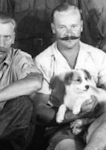 e man in the front row of this photo of the Crawford fire department is holding a dog sitting in the front row with him. The German prisoners of war at Camp Atlanta and the 1906 Nebraska State Normal School at Kearney football team also chose to include dogs in their group photos.
e man in the front row of this photo of the Crawford fire department is holding a dog sitting in the front row with him. The German prisoners of war at Camp Atlanta and the 1906 Nebraska State Normal School at Kearney football team also chose to include dogs in their group photos.
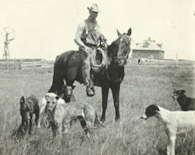 As you can see, some dogs were put to work. This man on a horse has a group of five dogs with him.
As you can see, some dogs were put to work. This man on a horse has a group of five dogs with him.
Have you ever seen a Dog walking on a tight rope? That was one well-trained dog.
 I don’t know what to say about this poor dog who was dressed up to advertise the Denver Chop House Restaurant in Omaha. To me the banner looks like it was designed for the dog to wear so he/she might have be used to that. Was the dog also trained to stand still wearing the wig, hat, and glasses? Do you think the dog actually had the cigarette in his mouth, or was it “photoshopped” in later? I asked a coworker this question, and she assumed it was really in the dog’s mouth because she didn’t realize people have been manipulating images since the 1800’s. You can see a few examples of manipulated photos in the, “What did it really look like?” blog post.
I don’t know what to say about this poor dog who was dressed up to advertise the Denver Chop House Restaurant in Omaha. To me the banner looks like it was designed for the dog to wear so he/she might have be used to that. Was the dog also trained to stand still wearing the wig, hat, and glasses? Do you think the dog actually had the cigarette in his mouth, or was it “photoshopped” in later? I asked a coworker this question, and she assumed it was really in the dog’s mouth because she didn’t realize people have been manipulating images since the 1800’s. You can see a few examples of manipulated photos in the, “What did it really look like?” blog post.
I’ve saved the cutest photos until the end. The Butler County Gallery collection in Nebraska Memories contains photos taken by the professional photographer Harvey Boston. As you can see, many people had pictures taken with their dog.
Visit Nebraska Memories to search for or browse through many more historical images digitized from photographs, negatives, postcards, maps, lantern slides, books and other materials.
Nebraska Memories is a cooperative project to digitize Nebraska-related historical and cultural heritage materials and make them available to researchers of all ages via the Internet. Nebraska Memories is brought to you by the Nebraska Library Commission. If your institution is interested in participating in Nebraska Memories, see http://nlc.nebraska.gov/nebraskamemories/participation.aspx for more information, contact Devra Dragos, Technology & Access Services Director.
Trees, Trees and More Trees!
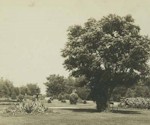 Since moving to Nebraska I have discovered many new and interesting facts. For example, Nebraska was the first state admitted to the United States after the Civil War. Nebraska is also home to both the National Museum of Roller Skating and the International Quilt Center and Museum. It’s also the site of the first American commemoration of Arbor Day. According to the Arbor Day Foundation, Arbor Day was first celebrated in 1872, in Nebraska City.
Since moving to Nebraska I have discovered many new and interesting facts. For example, Nebraska was the first state admitted to the United States after the Civil War. Nebraska is also home to both the National Museum of Roller Skating and the International Quilt Center and Museum. It’s also the site of the first American commemoration of Arbor Day. According to the Arbor Day Foundation, Arbor Day was first celebrated in 1872, in Nebraska City.
While J. Sterling Morton, who the Arbor Day Foundation credits with organizing that first Arbor Day, is not included in Nebraska Memories, there are many tree-filled photographs and postcards. Browsing through the collection, it seems as though trees pop up everywhere – in front of churches, libraries, schools, government buildings, and private homes. Trees even stand adjacent to Nebraska’s legendary cornfields!
In many of the images, the trees appear to have been deliberately planted. That is, I didn’t see a lot of pictures of broad forests, similar to those found in western Montana. For 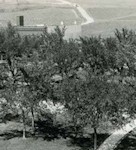 example, the trees surrounding Green Terrace Hall, on the campus of the Nebraska State Normal School in Kearney, grow in neat rows. This does not hold true for all the photographs and postcards I found. A postcard featuring two young women in Omaha’s Hanscom Park, depicts a meadow crowded with trees; while a postcard of Big Saddle Butte, near Crawford, shows trees scattered around a butte.
example, the trees surrounding Green Terrace Hall, on the campus of the Nebraska State Normal School in Kearney, grow in neat rows. This does not hold true for all the photographs and postcards I found. A postcard featuring two young women in Omaha’s Hanscom Park, depicts a meadow crowded with trees; while a postcard of Big Saddle Butte, near Crawford, shows trees scattered around a butte.
I’m sure in the coming months and years, I’ll learn many more fascinating bits of trivia. Here’s one more: Arbor Day is the last Friday of April. You don’t need to plant a tree to celebrate, but take a moment to enjoy the beauty of a tree. 
Visit Nebraska Memories to search for or browse through many more historical images digitized from photographs, negatives, postcards, maps, lantern slides, books and other materials.
Nebraska Memories is a cooperative project to digitize Nebraska-related historical and cultural heritage materials and make them available to researchers of all ages via the Internet. Nebraska Memories is brought to you by the Nebraska Library Commission. If your institution is interested in participating in Nebraska Memories, see http://nlc.nebraska.gov/nebraskamemories/participation.aspx for more information, contact Devra Dragos, Technology & Access Services Director.
Posted in Nebraska Memories
Leave a comment
Cats Rule and Dogs Drool

 According to my coworker, cats rule and dogs drool. I’m not sure I agree with him but don’t tell him that. He is one of many cat lovers who work at the Library Commission. If you work with a cat lover, are friends with a cat lover or are a cat lover yourself you probably see or are sent cute cat pictures and videos on a regular basis. The internet is full of cat related pictures and videos and social media has made it easy for folks to share their favorites.
According to my coworker, cats rule and dogs drool. I’m not sure I agree with him but don’t tell him that. He is one of many cat lovers who work at the Library Commission. If you work with a cat lover, are friends with a cat lover or are a cat lover yourself you probably see or are sent cute cat pictures and videos on a regular basis. The internet is full of cat related pictures and videos and social media has made it easy for folks to share their favorites.
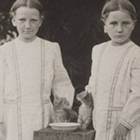 People taking pictures of their cats is nothing new. In Nebraska Memories, I found 11 photos that included at least one cat. Photographer John Nelson took pictures of his nieces Alice, Mildred, Eda and Henrietta all holding cats or kittens. You can’t go wrong with pictures of kids with cats.
People taking pictures of their cats is nothing new. In Nebraska Memories, I found 11 photos that included at least one cat. Photographer John Nelson took pictures of his nieces Alice, Mildred, Eda and Henrietta all holding cats or kittens. You can’t go wrong with pictures of kids with cats.
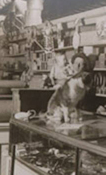 John Nelson also took a picture of a cat in a hardware store. I find it amusing to see the cat sitting on top of the glass display case. I’m not sure if he intended for the cat to be the focus of the picture but the cat is more visible then the humans in the picture.
John Nelson also took a picture of a cat in a hardware store. I find it amusing to see the cat sitting on top of the glass display case. I’m not sure if he intended for the cat to be the focus of the picture but the cat is more visible then the humans in the picture.
 The other photos in Nebraska Memories that included cats were taken by William Wallace. William Wallace served as a vice president for the Omaha National Bank for many years, and it appears he was also an avid photographer.
The other photos in Nebraska Memories that included cats were taken by William Wallace. William Wallace served as a vice president for the Omaha National Bank for many years, and it appears he was also an avid photographer.
 It’s obvious that William meant for the cats to be the focus of his pictures. I’m guessing that the cats might have ruled the house. The cat looks content lying on the family’s kitchen table. Because the photos are black and white, it’s hard to tell if the cat on the table is also one of the cats sleeping on the bed. Do you think the cat on the bed
It’s obvious that William meant for the cats to be the focus of his pictures. I’m guessing that the cats might have ruled the house. The cat looks content lying on the family’s kitchen table. Because the photos are black and white, it’s hard to tell if the cat on the table is also one of the cats sleeping on the bed. Do you think the cat on the bed  with the white fur on his face and neck is the same cat playing on the banister? Are they the same cats that are providing entertainment in these three pictures taken in the Wallace’s library?
with the white fur on his face and neck is the same cat playing on the banister? Are they the same cats that are providing entertainment in these three pictures taken in the Wallace’s library?
Visit Nebraska Memories to search for or browse through many more historical images digitized from photographs, negatives, postcards, maps, lantern slides, books and other materials.
Nebraska Memories is a cooperative project to digitize Nebraska-related historical and cultural heritage materials and make them available to researchers of all ages via the Internet. Nebraska Memories is brought to you by the Nebraska Library Commission. If your institution is interested in participating in Nebraska Memories, see http://nlc.nebraska.gov/nebraskamemories/participation.aspx for more information, contact Devra Dragos, Technology & Access Services Director.
Windmills of Nebraska
 In early January, I moved from Montana to Nebraska. This is not necessarily the best time of the year for a road trip. It’s cold. It’s bleak. Fortunately, my mom decided to make the trip with me. We entertained ourselves by talking about the landmarks, odd formations, and abandoned structures we glimpsed along the freeway. For example, as we drove from Scottsbluff to Lincoln, we saw a lot of windmills. It seemed like there were windmills popping up all over the place. Looking for windmills helps make that last leg go a little faster!
In early January, I moved from Montana to Nebraska. This is not necessarily the best time of the year for a road trip. It’s cold. It’s bleak. Fortunately, my mom decided to make the trip with me. We entertained ourselves by talking about the landmarks, odd formations, and abandoned structures we glimpsed along the freeway. For example, as we drove from Scottsbluff to Lincoln, we saw a lot of windmills. It seemed like there were windmills popping up all over the place. Looking for windmills helps make that last leg go a little faster!
Now, we have windmills in Montana. We even have a few wind farms, but you do not see a lot of windmills standing alone in a field. Most are adjacent to a farmhouse or a barn, and may still be operational. For those living off the grid, windmills serve as an excellent power source. Wanting to see 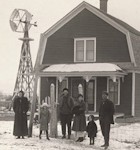 more of Nebraska’s windmill heritage, I searched Nebraska Memories for images and publications.
more of Nebraska’s windmill heritage, I searched Nebraska Memories for images and publications.
As you may know, homesteaders used windmills to convert wind into energy that could be used to pump water wells. In areas where there are few rivers, it makes sense that farmers and ranchers used the energy generated by windmills to bring water to the surface. Looking through Nebraska Memories, I found a few photographs of windmills. However, rather than featuring a solitary windmill in a field, most of the images depicted windmills standing adjacent to a homestead or lurking in the background. This makes sense. After all, the windmills my mom and I glimpsed as we sped across the Nebraska plains were the remains of abandoned homesteads.
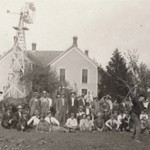 If you would like to see more photographs of windmills, visit Nebraska Memories to search for or browse through many more historical images digitized from photographs, negatives, postcards, maps, lantern slides, books and other materials.
If you would like to see more photographs of windmills, visit Nebraska Memories to search for or browse through many more historical images digitized from photographs, negatives, postcards, maps, lantern slides, books and other materials.
Nebraska Memories is a cooperative project to digitize Nebraska-related historical and cultural heritage materials and make them available to researchers of all ages via the Internet. Nebraska Memories is brought to you by the Nebraska Library Commission. If your institution is interested in participating in Nebraska Memories, http://nlc.nebraska.gov/nebraskamemories/participation.aspx For more information, contact Devra Dragos, Technology & Access Services Director.
Posted in Nebraska Memories
Leave a comment
Throwback Thursday: Scottsbluff Carnegie Library
Posted in General, Nebraska Memories
Leave a comment
Dressed to the Nines
The origin of the phrase “to the nines” is debatable; however, the meaning or intent seems to be consistent, as in to perfection or to the highest degree. When combined with the word dress, it can mean smartly or flamboyantly.
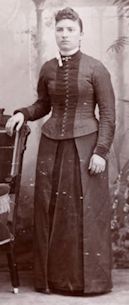
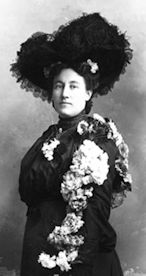 Formal dress was de rigueur for photographs taken in a photographer’s studio, even in small town Nebraska. Florence Martin Stevens, dressed in a trim two-piece fitted top and matching skirt, posed for the photograph, at left, taken by A. C. Strauss in Osceola, Nebraska, probably in the 1890s. The only embellishment on her tidy costume appears to be a bow at the collar. Margaret Meister’s costume, on the other hand, is a bit looser fitting, embellished with flowers, and topped by a very large frilly hat. Mrs. Meister’s photographer, Harvey Boston of David City, perhaps contributed the flowers as some of the women in other photographs taken by him are also decked out in a similar manner (Butler County Gallery Collection).
Formal dress was de rigueur for photographs taken in a photographer’s studio, even in small town Nebraska. Florence Martin Stevens, dressed in a trim two-piece fitted top and matching skirt, posed for the photograph, at left, taken by A. C. Strauss in Osceola, Nebraska, probably in the 1890s. The only embellishment on her tidy costume appears to be a bow at the collar. Margaret Meister’s costume, on the other hand, is a bit looser fitting, embellished with flowers, and topped by a very large frilly hat. Mrs. Meister’s photographer, Harvey Boston of David City, perhaps contributed the flowers as some of the women in other photographs taken by him are also decked out in a similar manner (Butler County Gallery Collection).
 In the following decade, Dora Lane dressed just as fine but her costume is a two-piece suit made of a lighter colored pinstripe material and worn over a white blouse with lace at its collar. The jacket, while fitted around the body, has puffed sleeves and insets of darker cloth at the cuffs which match the attachment on her collar. Her large hat of a dark color isn’t quite as frilly as Mrs. Meister’s; it has a bit of frill at the back and some type of ornamentation on the front brim. Harvey Boston also took this photograph.
In the following decade, Dora Lane dressed just as fine but her costume is a two-piece suit made of a lighter colored pinstripe material and worn over a white blouse with lace at its collar. The jacket, while fitted around the body, has puffed sleeves and insets of darker cloth at the cuffs which match the attachment on her collar. Her large hat of a dark color isn’t quite as frilly as Mrs. Meister’s; it has a bit of frill at the back and some type of ornamentation on the front brim. Harvey Boston also took this photograph.
 A few decades later, during the Great Depression, hemlines had risen and clothing tended to be less bulky. However, in Mr. and Mrs. Victor Barta’s wedding picture, the bride, Helen, wears a dark dress lightened by a wide, white lace over-collar and calla lilies pinned at the center of her neckline. Her soft hat is much smaller than the other two, more like a cap, but it has a wide woven ribbon around the edge and a short piece of netting attached to the back edge. This photograph was taken by Harvey’s daughter, Edith Boston Proskovec in 1936.
A few decades later, during the Great Depression, hemlines had risen and clothing tended to be less bulky. However, in Mr. and Mrs. Victor Barta’s wedding picture, the bride, Helen, wears a dark dress lightened by a wide, white lace over-collar and calla lilies pinned at the center of her neckline. Her soft hat is much smaller than the other two, more like a cap, but it has a wide woven ribbon around the edge and a short piece of netting attached to the back edge. This photograph was taken by Harvey’s daughter, Edith Boston Proskovec in 1936.
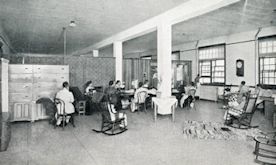 So where would these ladies have gotten their fine outfits? The first three were most likely made at home or by a dressmaker specifically for the wearers. Into the beginning of the twentieth century, even in institutions, like the Nebraska Hospital for the Insane, clothing had to be sewn (Section of sewing room in Industrial Building, Nebraska Hospital for the Insane. Lincoln, Nebraska Library Commission Collection).
So where would these ladies have gotten their fine outfits? The first three were most likely made at home or by a dressmaker specifically for the wearers. Into the beginning of the twentieth century, even in institutions, like the Nebraska Hospital for the Insane, clothing had to be sewn (Section of sewing room in Industrial Building, Nebraska Hospital for the Insane. Lincoln, Nebraska Library Commission Collection).

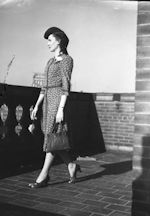 Mrs. Barta, Helen, may have had her dress specially made, too. Or it’s possible she made the trip to one of the larger towns in Nebraska to shop at a store such as Virginia Dare Women’s Apparel in Omaha. William Wentworth’s night time photograph from the late 1930s or early 1940s shows lots of wonderful costumes and accoutrements. The Brandeis Store was another popular department store in Omaha, and Wentworth’s photograph at right shows one of their models wearing a ready-to-wear print dress in 1939. (The Durham Museum Collection)
Mrs. Barta, Helen, may have had her dress specially made, too. Or it’s possible she made the trip to one of the larger towns in Nebraska to shop at a store such as Virginia Dare Women’s Apparel in Omaha. William Wentworth’s night time photograph from the late 1930s or early 1940s shows lots of wonderful costumes and accoutrements. The Brandeis Store was another popular department store in Omaha, and Wentworth’s photograph at right shows one of their models wearing a ready-to-wear print dress in 1939. (The Durham Museum Collection)
It is also possible that Helen shopped in her local dress store the A to Z Dress Shop in David City, shown below. Small to be sure, but customers were certain to receive personal service.
Visit Nebraska Memories to search for or browse through many more historical images digitized from photographs, negatives, postcards, maps, lantern slides, books and other materials.
Nebraska Memories is a cooperative project to digitize Nebraska-related historical and cultural heritage materials and make them available to researchers of all ages via the Internet. Nebraska Memories is brought to you by the Nebraska Library Commission. If your institution is interested in participating in Nebraska Memories, see http://nlc.nebraska.gov/nebraskamemories/participation.aspx for more information, contact Devra Dragos, Technology & Access Services Director.
Posted in Nebraska Memories
Leave a comment
